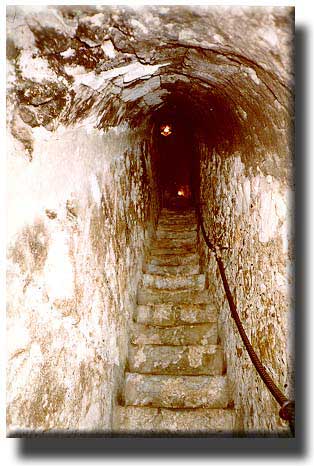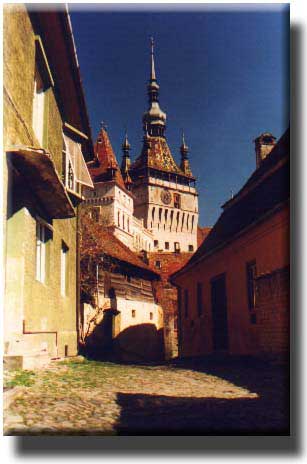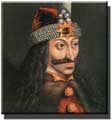|
| |
|
|
|
|
|
|
|
With all the legends surrounding his figure, Vlad Tepes (The Impaler) is one of the most famous historical medieval characters of Europe. Not many of us know who Sigismund Bathory or Prince Ludwig were, but everybody heard about Vlad Dracula. Historical facts, rumors and popular myths join together to compose this extraordinary legend, the legend of Dracula. They say he nailed turks` turbans to their heads, that he was a blood drinking vampire, that he scared away his enemies using the most cruel techniques of torture imaginable, that he became a vampire after his death and also that he defended his people and their Christian religion until his last breath, that he built people`s bodies into the walls of the monasteries that he financed... What is true and what is fiction? One can only decide for themselves... It is a known historical fact that Vlad`s most common method of punishment was impaling his enemies, as well as traitors, vilains, thieves and murderers. While the cruelty of this type of executions was extreme, even by the time`s standards, it proved itself to be very efficient. During the periods when Vlad would be the leader, crime and attacks from turks and other enemies diminished drastically in Walachia. Picture the marches of a foreign army among the screams of their dieing predecessors, impaled along the sides of the roads. As Vlad`s torture `techiniques` became famous and the Turk Empire`s invasions in Europe stopped, he turned against the criminals within his own domain. There are stories according to which people would turn in found valuables, such as gold, coins, cattle, products. Not only everybody was afraid to steal, but nobody would even heve the courage to keep what they found and didn`t belong to them. Vlad was born in 1431, in the city of Sighisoara in Transylvania, in a house that still stands today. It is a strange coincidence that Sighisoara is the last and only medieval citadel in the whole Europe that is still inhabited in our days. Why, from all the fortresses, this was the only one to last over the centuries? Nobody has an exact answer. What we know for a fact is that people still live in the same buildings as six or seven hundred years ago. When one sees Sighisoara, they are amazed to see the solid structures of this beautiful city lasting for this long. It is so incredible that a building from the 14th century is used as a normal modern building and it shows no signs of giving up soon. This is the kind of city that Vlad the Impaler was born in. In innumerable historical writings it`s said that he used to have meals with his noblemen amongst the dieing impaled bodies of his victims. Most of the times, his guests for that meal became the next victims. This was a method he used to scare anybody who would think about betraying him, or doing other acts of disobedience. Several times, the land would be full of `forests` of sharp stakes with the bodies of the conspirators and criminals. Once, it is said, he nailed the turbans of Turkish messengers to their heads because they refused to take them off in his presence. They also say about him that he would build living human bodies into the walls of his monasteries, but this is a more recent Romanian legend, that appeared a few centuries after he died, in refference to a totally diferent historical situation. Vlad died in a battle against the Turks in 1476. He was buried in one of the monasteries he built, on an island on the lake of Snagov, close to Bucharest. However in 1931 his richly dressed body was exhumed and now lies in a coffin in front of the altar. |
 For those brave enough to be curious, see Dracula`s Castle from the outside here and step inside his home here. See all the pictures from Bran Castle in the Picture Gallery.
For those brave enough to be curious, see Dracula`s Castle from the outside here and step inside his home here. See all the pictures from Bran Castle in the Picture Gallery.

 Another one of Vlad`s portraits
Another one of Vlad`s portraits Early German drawing of one of Vlad`s meals among impaled corpses
Early German drawing of one of Vlad`s meals among impaled corpses Vlad`s empty tomb
Vlad`s empty tomb Vlad`s most famous portrait made in the 15th century
Vlad`s most famous portrait made in the 15th century